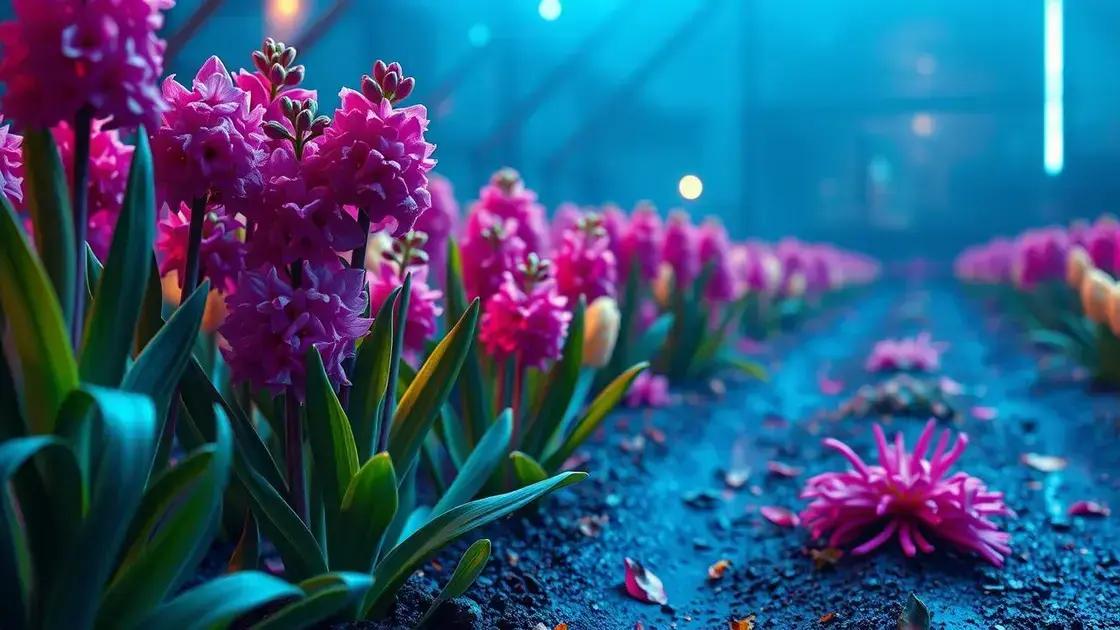How to take care of a hyacinth plant is a question many gardeners ask when seeking to create a stunning floral display. With their vibrant colors and delightful fragrance, hyacinths can transform any garden space. Learn the crucial steps to nurturing these beautiful plants and enjoy their full glory.
Table of Contents
ToggleUnderstanding the soil requirements for hyacinth plants
Understanding the soil requirements for hyacinth plants is vital for their healthy growth and beautiful blooms. Hyacinths thrive in well-draining soil that provides adequate nutrients and moisture control. The right soil mix can make a significant difference in how these lovely flowers perform.
When selecting soil for your hyacinth plants, keep the following key points in mind:
- Choose well-draining soil to prevent waterlogging, which can lead to bulb rot.
- Opt for a loamy soil mix that retains some moisture while allowing excess water to drain away.
- Add organic matter, such as compost, to enrich the soil with nutrients.
- Ensure a pH level between 6.0 and 7.0 for optimal nutrient availability.
Additionally, consider these tips for maintaining the right soil environment:
- Mix your own soil: Combine equal parts of potting soil, peat moss, and perlite to create a balanced mix for your hyacinth plants.
- Check drainage: If planting in pots, ensure that there are drainage holes to allow excess water to flow out.
- Monitor moisture: Regularly check the moisture content of the soil; it should be moist but not soggy to promote healthy roots.
| Soil Component | Benefit |
|---|---|
| Potting Soil | Provides a base with nutrients |
| Peat Moss | Enhances moisture retention |
| Perlite | Improves drainage |
Lastly, remember that soil quality impacts your plants’ health over time. Regularly refresh your soil mix to ensure the best conditions for flowering. For those interested in exploring indoor gardening techniques, understanding soil dynamics is a fundamental step.
Establishing a proper watering schedule for your hyacinth

Establishing a proper watering schedule for your hyacinth is crucial for ensuring healthy growth and vibrant blooms. Hyacinths require a careful balance of moisture to thrive, as both overwatering and underwatering can damage the bulbs. Understanding their watering needs will help you create the optimal schedule.
Here are some essential guidelines for watering your hyacinth plants:
- Water thoroughly after planting to kickstart growth.
- Keep the soil consistently moist but not soggy during the growing season.
- Reduce watering as the foliage begins to die back.
- Allow the soil to dry out slightly between waterings.
A well-structured watering schedule will help maintain optimal moisture levels. Follow these steps to create an effective routine:
- Check soil moisture: Use your fingers to test the top inch of soil. If it feels dry, it’s time to water.
- Establish a frequency: During active growth, water once a week, adjusting based on weather conditions.
- Monitor rainfall: If planting outdoors, consider natural rainfall to reduce your watering needs.
Consider using a drip irrigation system or self-watering pots to maintain a consistent moisture level. Remember that hyacinth bulbs need less water during their dormant phase, which usually occurs in late spring. For more insights on improving your gardening skills, check out exploring indoor gardening techniques.
Optimal sunlight exposure for thriving hyacinth plants
Optimal sunlight exposure for thriving hyacinth plants is essential for achieving vibrant blooms and healthy foliage. Hyacinths prefer bright, indirect sunlight, which helps them thrive and flourish. Understanding their light requirements is key to successful cultivation.
When positioning your hyacinth plants, consider the following guidelines:
- Place indoor hyacinths near a south-facing window for maximum light exposure.
- Avoid direct sunlight, particularly during the hottest part of the day, to prevent leaf scorch.
- For outdoor hyacinths, choose a location that offers at least 6 hours of sunlight daily.
- Rotate potted hyacinths periodically to ensure even light distribution on all sides.
Here are some practical tips for managing sunlight exposure:
- Observe your plants: Monitor the growth of your hyacinths. If leaves appear leggy, they may need more light.
- Use sheer curtains: If growing indoors, consider using sheer curtains to diffuse harsh sunlight while still providing brightness.
- Check for signs of stress: Yellowing leaves can indicate either too much sun or not enough light.
Experiment with light conditions until you find the perfect spot for your hyacinths. For additional insights on enhancing your gardening experience, explore exploring indoor gardening techniques.
In conclusion
Caring for hyacinth plants requires attention to various aspects including soil quality, proper watering schedules, and optimal sunlight exposure. By following these guidelines, you can enjoy beautiful blooms and vibrant foliage throughout the growing season. Don’t forget to regularly monitor your plants and adjust care routines as needed. For more valuable tips on enhancing your indoor garden, make sure to explore all the resources available.

